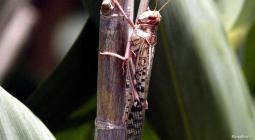Which Countries Are Most Vulnerable to Locust Swarms?

Massive swarms of the voracious desert locust have been damaging crops and pastures and crippling communities in the Greater Horn of Africa, Arabian Peninsula and Southwest Asia since October 2019. Following cyclones and widespread rainfall, which create a favorable breeding ground for locusts, the UN’s Food and Agriculture Organization warned that locust numbers could grow another 20 times over the coming months without stronger control measures.
“Indeed, the locust eruption is another reminder of how climate change poses a clear and present danger,” said WRI Vice President and Regional Director for Africa Wanjira Mathai. “The locust outbreak is further compounded by the challenges of COVID-19, which have hampered preparation efforts to fight and control the pests. It’s urgent that we build resilience in our food systems so that external shocks like COVID-19 and locusts are not as devastating.”
The UN warned that locust swarms could lead to a potential food crisis. Swarms can eat their weight in food daily; a swarm covering one square kilometer can eat as much in a day as 35,000 people. This is especially problematic in countries already suffering from hunger and food insecurity. Data sets on WRI’s Resource Watch platform shed light on which countries may be especially vulnerable.

Desert Locust Swarms Could Exacerbate Food Insecurity and Hunger
According to data from the Famine Early Warning Systems Network, the current hotspots of locust activity on the Horn of Africa and Yemen are happening in countries currently experiencing “stressed,” “crisis” and “emergency” levels of food insecurity. Classifications of acute food insecurity are calculated based on combining indicators related to food consumption, livelihoods, malnutrition and mortality.
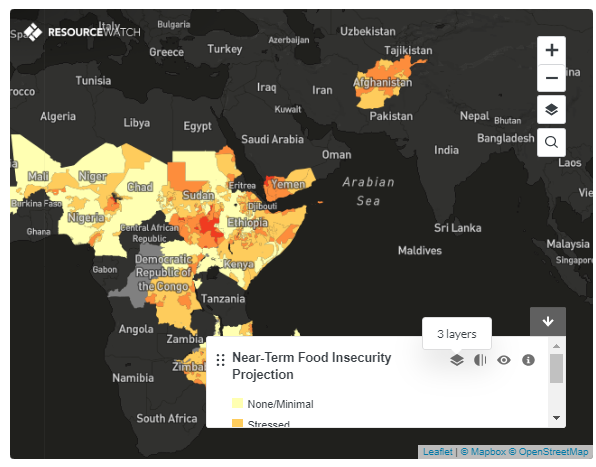
Locust Hotspots in the Horn of Africa
In the Horn of Africa, three countries have been hotspots of locust activity: Kenya, Ethiopia and Somalia. These same countries are also experiencing high levels of food insecurity, to the tune of 11.9 million people collectively. Many regions in these three countries are experiencing stressed and crisis levels of food insecurity, according to data from the Famine Early Warning Systems Network.
Ethiopia and Kenya are also experiencing serious levels of hunger, receiving a score of 28.9 and 25.2 on the 2019 Global Hunger Index, respectively. These scores are calculated based on indicators related to undernourishment, child wasting, child stunting and child mortality. And in Somalia, rural households have been struggling to produce and access sufficient nutritious food since 2016 due to the effects of climate change on their growing seasons.
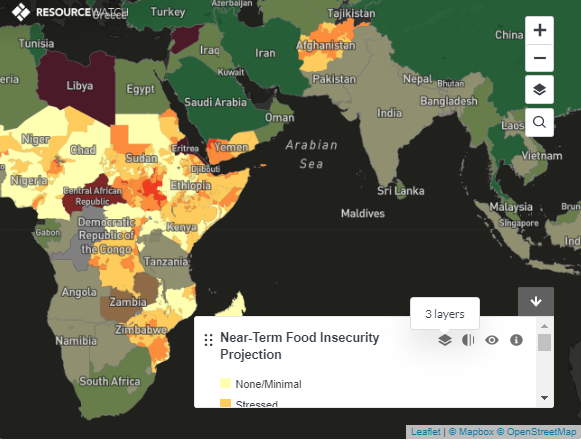
At the same time, data from the World Food Programme shows that regional cereal and tuber food prices in the Horn of Africa are experiencing concerning spikes. For example, maize and rice at Dhuusamarreeb market in Somalia, teff in Addis Ababa market, and maize and wheat at Dire Dawa market in Ethiopia are at “crisis” levels, with food prices significantly higher than the norm.
Food prices at local markets are often correlated with food security crises. Food price spikes can have devastating impacts on rural households in developing countries since these households spend a large percentage of their incomes on food. If food supplies further decrease because of locust swarms, it could exacerbate food insecurity.
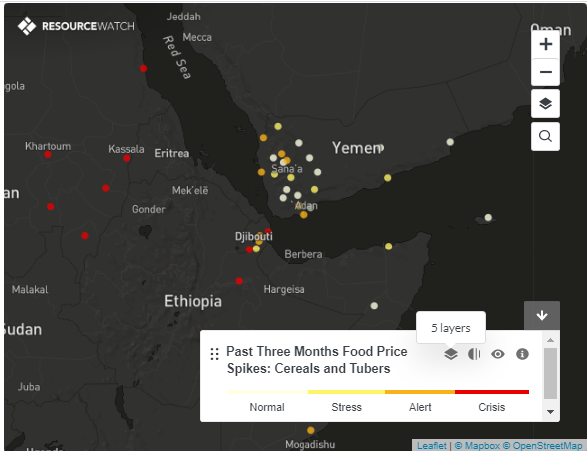
Locust Activity in the Arabian Peninsula
Along the Red Sea coast, Yemen and Saudi Arabia have both seen high amounts of locust activity. Yet Saudi Arabia is much-better positioned to weather the infestation since it has a low risk score of 8.5 on the Global Hunger Index.
The Famine Early Warning Systems Network projects that areas of Yemen will experience stressed, crisis and emergency levels of food insecurity through at least September 2020. Yemen also has the second-highest hunger score among 117 countries in the Global Hunger Index. The data shows a 61.1% child stunting rate and 17.9% wasting rate, meaning that average height and weight are two standard deviations below the median of healthy children. With such widespread food insecurity and nutrition deficits, protecting existing food resources in the face of locust outbreaks is critical.
The Alert for Price Spikes (ALPS) data from the World Food Programme also suggests rice, wheat and wheat flour prices are at “stress” and “alert” levels in several local markets.

The ongoing civil war in Yemen also increases difficulty in containing desert locusts, as the control efforts are divided between the government and Houthi rebels. The 2020 Global Report on Food Crises suggests that Yemen will likely experience the world’s worst food crisis in 2020 due to the combined effects of conflict, economic crisis, climate-related shocks, and pests, including fall armyworm and desert locusts.
Preparing for More Locust Outbreaks in a Warmer World
The countries listed above are not the only ones whose food systems could suffer from locust swarms, and pest outbreaks are hardly the only stressor to food security. Their existing hunger and food insecurity issues, however, signal potentially severe impacts.
It’s a situation that could become more common in a warmer world. East Africa’s high number of cyclones and unusually wet weather have been driven by a positive phase of the Indian Ocean Dipole, dragging warmer-than-normal water toward the Arabian Peninsula and Horn of Africa. A new study in Nature found that positive dipole events are becoming more frequent. Climate change could lead to faster warming in the western Indian Ocean and more frequent or stronger cyclones in East Africa, creating a favorable breeding ground for locusts. Without effective preventative and control measures, locust outbreaks could become a more common occurrence in East Africa.
Track Locust Outbreaks in Near-real Time
While locusts seem to be concentrated in the Horn of Africa, Arabian Peninsula and southwest Asia for now, FAO recently warned of an impending invasion in Sudan, Indo-Pakistan border areas, and perhaps the Sahel of West Africa.
You can track locusts in near-real time with the current disaster dataset, updated daily, which actively monitors ongoing natural disasters, including insect infestations.
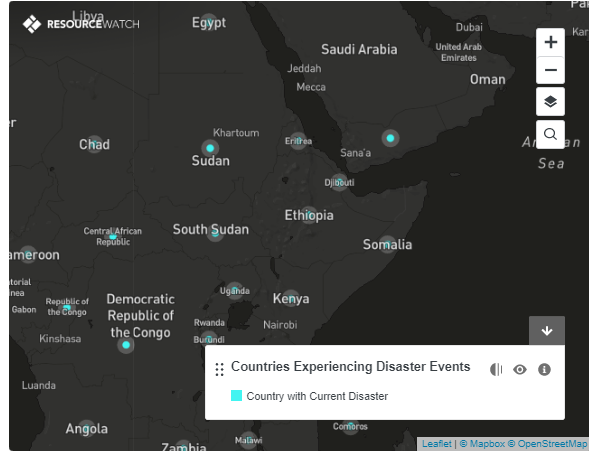
Explore additional real-time data on Resource Watch here.
19 May 2020
WORLD RESOURCES INSTITUTE



